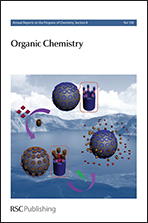Synthetic methods
Part (i) Free-radical reactions
Abstract
Visible light photoredox catalysis is gradually replacing traditional radical reagents for the initiation and propagation of radical reactions in organic synthesis. This year has seen this methodology employed to generate high-energy

 Please wait while we load your content...
Please wait while we load your content...